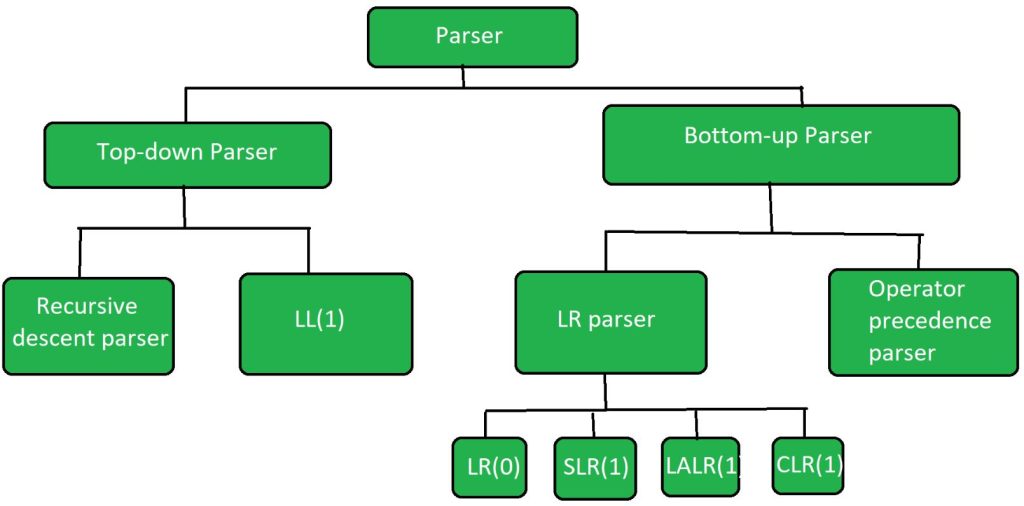Syntax analyzers follow production rules defined by means of context-free grammar. The way the production rules are implemented (derivation) divides parsing into two types : top-down parsing and bottom-up parsing.

Top-down Parsing
When the parser starts constructing the parse tree from the start symbol and then tries to transform the start symbol to the input, it is called top-down parsing.
· Recursive descent parsing : It is a common form of top-down parsing. It is called recursive as it uses recursive procedures to process the input. Recursive descent parsing suffers from backtracking.
· Backtracking : It means, if one derivation of a production fails, the syntax analyzer restarts the process using different rules of same production. This technique may process the input string more than once to determine the right production.
Bottom-up Parsing
As the name suggests, bottom-up parsing starts with the input symbols and tries to construct the parse tree up to the start symbol.
Example:
Input string : a + b * c
Production rules:
S → E
E → E + T
E → E * T
E → T
T → id
Let us start bottom-up parsing
a + b * c
Read the input and check if any production matches with the input:
a + b * c
T + b * c
E + b * c
E + T * c
E * c
E * T
E
S


